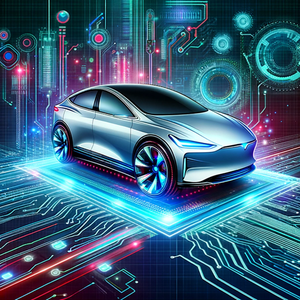Red. Yellow. Green. We are very familiar. Could handle a fourth "White" light?
According to a recent report by the Department of Civil, Construction, and Environmental Engineering at NC State University, a new type of traffic signal could significantly reduce wait times for both pedestrians and vehicles. This innovative solution, dubbed the "white phase", leverages the computational abilities of autonomous vehicles (AVs) to expedite the flow of traffic at intersections.
The concept of the "white phase" relies on wireless communication between AVs and traffic signal computers. Upon detecting an approaching cluster of AVs, a new, white light would be activated. While red signals stop and greens signal go, the white light tells human drivers to follow the vehicle ahead of them.
“Our earlier work introduced the idea of a fourth traffic signal called a ‘white phase,’ which taps into the computing power of autonomous vehicles (AVs) in order to expedite traffic at intersections — but we had not yet incorporated what this concept would mean for pedestrians,” said Associate Professor Ali Hajbabaie, corresponding author of the paper. “We’ve now expanded our computational modeling to account for foot traffic, and the results are extremely promising for both pedestrians and vehicles.”
This essentially allows AVs to coordinate their movements, thus facilitating more efficient intersection crossings. Importantly, this system not only improves travel time and fuel efficiency for AVs but also has widespread benefits for all road users.
“Our previous research found that the more AVs there are on the road, the more efficiently the traffic moves,” Hajbabaie said. “To be clear, this improves travel time, fuel efficiency and safety for all of the cars on the road — not just AVs.”
To accommodate pedestrian traffic, the researchers also integrated new parameters into their optimization model to measure the impact of foot traffic on intersection efficiency. The findings indicate that the "white phase" concept remains beneficial for all traffic, even with pedestrians included.
The team acknowledged that while complete adoption of autonomous vehicles could reduce intersection delays by more than 25%, even a lower percentage of wirelessly connected AVs would still result in notable traffic time improvements.
While it is understood that such traffic technologies will not be adopted immediately, researchers are already laying groundwork for future pilot projects to ensure their safety and effectiveness.
Maverick is the call sign of Mobile Gnosis publisher and editor-in-chief, Matt De Reno. Have a tip, story idea, or news item to share? You can send him an email at


